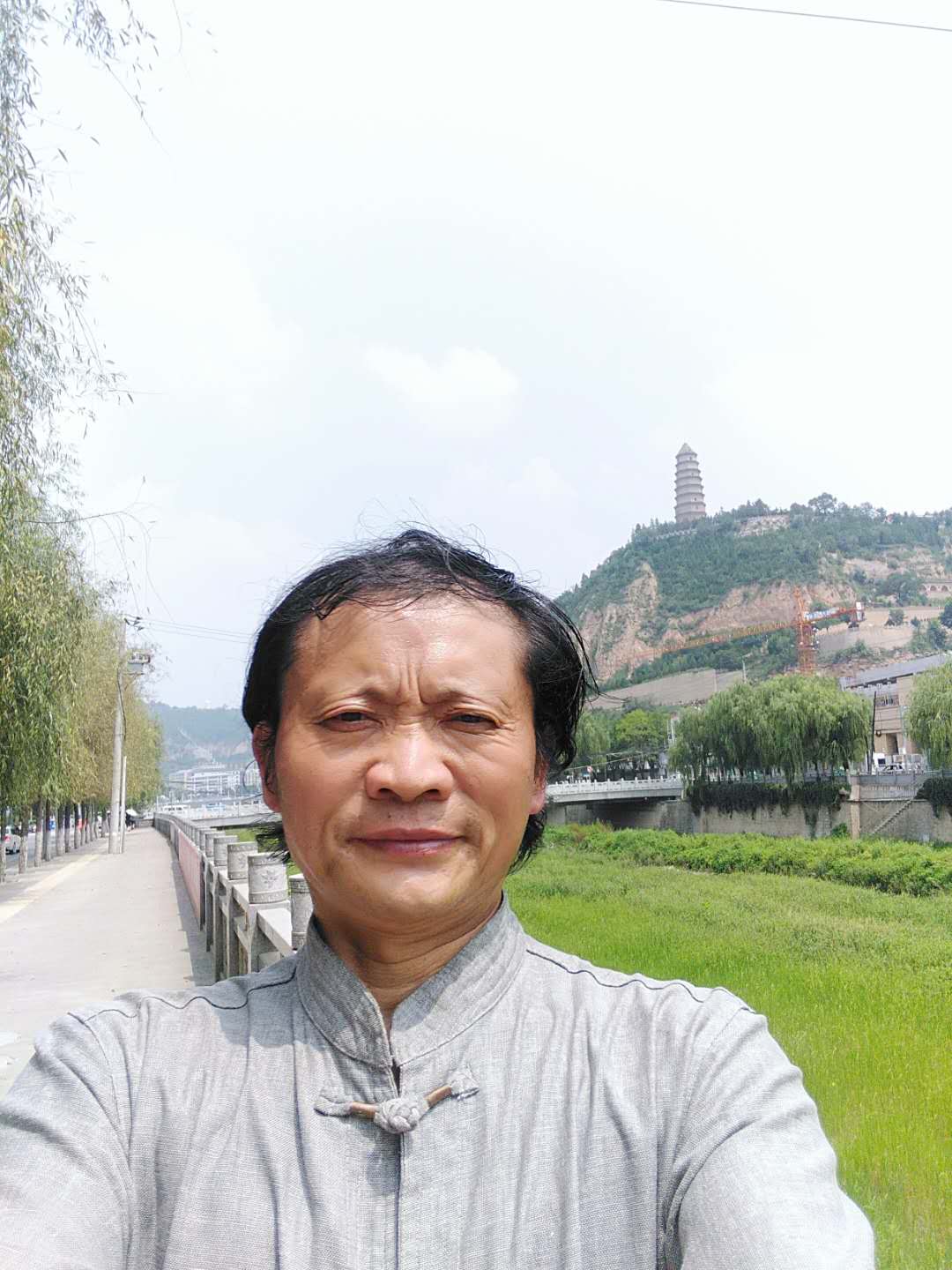Milan Yang
Milan Yang
Personal Profile
Milan Yang, originally named Zhang Zhengkun, was born in 1964 in Kaifeng City, Henan Province. He once studied calligraphy at the Art Department of Henan University, is a specially appointed calligrapher by the Ministry of Culture's Integrity 315 Program, an invited calligrapher for Henan Wenwu Jue, President of the Henan Lanmo Academy of Calligraphy and Painting, and a guest professor at Henan University.I have known Teacher Milan Yang for nearly twenty years. Throughout this time, his personal charm and dedication to studying calligraphy have deeply inspired me. Through years of hard work, he has gradually become a highly influential master calligrapher nationwide.
He has received guidance from renowned calligraphy masters such as Quan Xijun, Su Shishu, and Fan Zeng. His works are collected by numerous museums across China and by foreign political figures.His running script draws inspiration from Wang Xizhi, Mi Fu, and Wang Duo—broad and powerful, dignified and elegant, skillfully blending rounded and angular strokes with a combination of stele and帖 (tie) styles. His brushwork features swift and slow movements,顿 (dun) and 挫 (cuo) techniques, resulting in a rustic yet vigorous quality. On the foundation of absorbing the ancient elegance and Zen-like grace of past masters, his works fully express the flourishing prosperity of the Chinese nation.
His cursive script benefits from Zhang Xu and Huai Su, characterized by refined taste and an ancient, elevated spirit. Grand and dynamic, gracefully undulating, it possesses both rhythm and melody. The brushwork is bold and expansive, resembling an ancient dragon coiled around a tree, vibrant and spirited—dry yet moist, ruggedly unique, freely潇洒 (xiaosa), integrating traditional techniques into innovative expressions and creating new methods beyond classical aesthetics. The powerful momentum like sails in stormy winds and battle-ready horses, combined with an ethereal elegance, conveys a transcendent, serene beauty. Pioneering a distinct school, bridging past and future, his work stands out with originality, exquisite craftsmanship, and has reached an exceptionally high artistic realm. It reflects the artist’s grand vision, scholarly demeanor, and unparalleled spirit of artistic innovation.
Chinese art has long pursued the ideal of “reading ten thousand books and traveling ten thousand miles.” Reading represents the acquisition of indirect experience, while traveling embodies the process of experiencing, feeling, and re-understanding the world. Living in central China, he has traveled multiple times to Gansu, Shandong, Jiangsu-Zhejiang, and Guangdong-Guangxi regions for creative inspiration. Wherever he goes, nurtured by landscapes and enriched by cultural heritage, he follows the principle of “learning from nature externally and seeking inspiration internally,” producing a vast number of outstanding works. His realistic style, deeply rooted in society and serving the people, has transformed his calligraphy from quantitative accumulation to qualitative breakthrough, earning him the title of “People’s Artist.” Indeed, piles of discarded brushes are not enough to guarantee excellence; only after reading ten thousand scrolls does one truly attain spiritual mastery. I hope that in his future practice, Teacher Milan Yang will elevate his calligraphic art to even greater heights.
He has received guidance from renowned calligraphy masters such as Quan Xijun, Su Shishu, and Fan Zeng. His works are collected by numerous museums across China and by foreign political figures.His running script draws inspiration from Wang Xizhi, Mi Fu, and Wang Duo—broad and powerful, dignified and elegant, skillfully blending rounded and angular strokes with a combination of stele and帖 (tie) styles. His brushwork features swift and slow movements,顿 (dun) and 挫 (cuo) techniques, resulting in a rustic yet vigorous quality. On the foundation of absorbing the ancient elegance and Zen-like grace of past masters, his works fully express the flourishing prosperity of the Chinese nation.
His cursive script benefits from Zhang Xu and Huai Su, characterized by refined taste and an ancient, elevated spirit. Grand and dynamic, gracefully undulating, it possesses both rhythm and melody. The brushwork is bold and expansive, resembling an ancient dragon coiled around a tree, vibrant and spirited—dry yet moist, ruggedly unique, freely潇洒 (xiaosa), integrating traditional techniques into innovative expressions and creating new methods beyond classical aesthetics. The powerful momentum like sails in stormy winds and battle-ready horses, combined with an ethereal elegance, conveys a transcendent, serene beauty. Pioneering a distinct school, bridging past and future, his work stands out with originality, exquisite craftsmanship, and has reached an exceptionally high artistic realm. It reflects the artist’s grand vision, scholarly demeanor, and unparalleled spirit of artistic innovation.
Chinese art has long pursued the ideal of “reading ten thousand books and traveling ten thousand miles.” Reading represents the acquisition of indirect experience, while traveling embodies the process of experiencing, feeling, and re-understanding the world. Living in central China, he has traveled multiple times to Gansu, Shandong, Jiangsu-Zhejiang, and Guangdong-Guangxi regions for creative inspiration. Wherever he goes, nurtured by landscapes and enriched by cultural heritage, he follows the principle of “learning from nature externally and seeking inspiration internally,” producing a vast number of outstanding works. His realistic style, deeply rooted in society and serving the people, has transformed his calligraphy from quantitative accumulation to qualitative breakthrough, earning him the title of “People’s Artist.” Indeed, piles of discarded brushes are not enough to guarantee excellence; only after reading ten thousand scrolls does one truly attain spiritual mastery. I hope that in his future practice, Teacher Milan Yang will elevate his calligraphic art to even greater heights.
para-title
TAG:
Milan Yang

 中文
中文  en
en 
